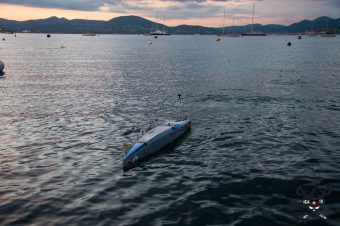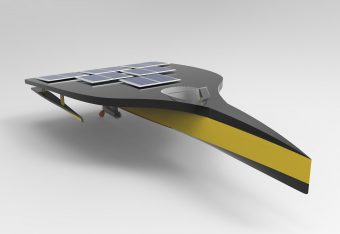
Floating islands of waste are real ecological disasters since they endanger water streams, the function of the hydropower plants, and the safe water supply. Moreover, they have a devastating impact on all the living world in the water. That problem initiated the idea of a vessel that could make the environment healthier and the whole society.
Nemanja Ilić, one of the Confluence Belgrade student team members, has had the great pleasure of joining this project. They have started with the support of the professors of the Shipbuilding Department and the Faculty of Mechanical Engineering management.
“We wanted to come up with a solution that would slow down and cut down the pollution of the river and other water surfaces in our country as well as worldwide. Nature is given to us, but we have to take care of it if we want it to repay us with its beauties and benefits”, Nemanja says.
The conceptual design
The base of the Sava Eko vessel is the hull of the Sava 1 ship, which was used at the Hidrocontest competition in Saint-Tropez in 2018. The vessel should consist of two hulls connected with stiffenings, making that way one vessel, a catamaran. The dimensions of the prototype of this two hulls vessel should be 2,54 x 1,48 m. The ship is supposed to be steered by a remote control system. The operator would 89 navigate the catamaran from the land towards the critical points in the water streams where the waste is held. The cameras and video links would provide a good overview of the situation. Nemanja says they plan to build a large ve- ssel (6 × 2.5 m) that a pilot would steer.
“The idea is to set up solar panels to supply the electromotor with energy. We will also need a battery for energy storage and a backup when there is no sunshine.”
In focus:

The realization of this project requires significant financial support, so Nemanja invites all the sponsors who recognize the idea and the vision of the Confluence Belgrade team to join and help, contributing that way to the process of nature conservation.
The challenges of the craftwork
While they were working on the Sava Eko project, the students could roll up their sleeves for the first time. They got down to making the catamaran hull like real artisans.
“We had to commit ourselves to the practical work too so we could gain the sense of the way the ship construction itself breaths. We had to learn that what was written on the paper doesn’t have to be performed the same way and that we 90 needed time, work, and effort to coordinate these two parts of the project”, Nemanja says. He points out that the students managed to handle work in the workshop, where they checked all the ideas and calculations from the pre-project.
Prepared by: Milica Radičević
Read the story in the new issue of the Energy portal Magazine WATER RESOURCES.
